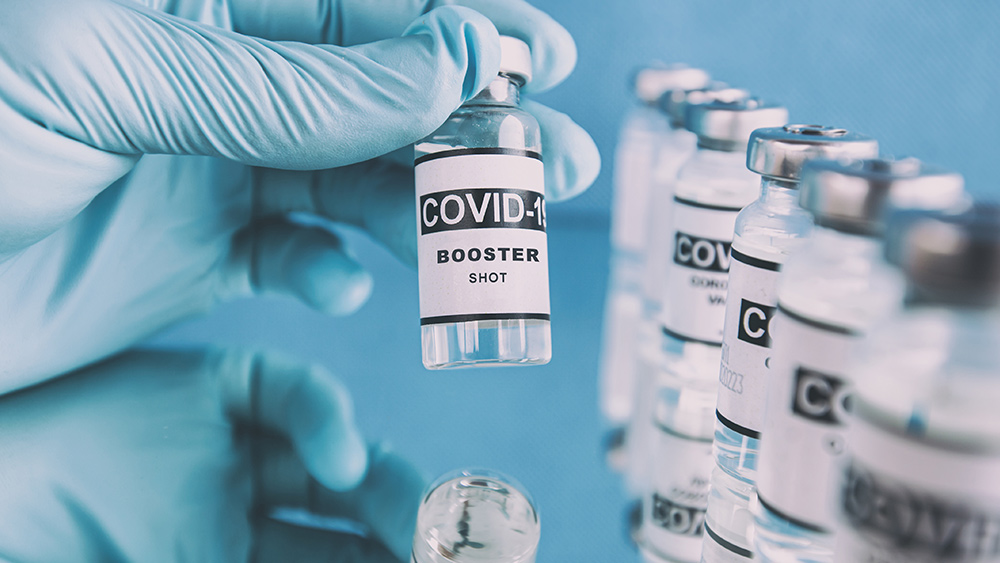Dairy industry in panic as more Americans stop drinking milk
11/23/2018 / By Rhonda Johansson

It looks like we don’t care if we “Got Milk?” these days. At least, that’s the conclusion a new report by the U.S. Department of Agriculture (USDA) assumed when it highlighted a significant decrease in cow milk consumption in the last 40 years. The analysis showed that the average American now consumes only around 18 gallons of cow’s milk a year, when it used to be 30 gallons annually in the 1970s. “Families aren’t sitting around the table and passing a gallon jug of milk around any more,” Cindy Weimer of the American Dairy Association North East was quoted as saying on AlliedNews.com.
This lack of interest in cow’s milk was attributed to conventional generational changes that occur with continual American diet evolution. With more alternatives out in the market, families are no longer limited to consuming cow’s milk for their calcium intake. Perhaps you remember the famous ‘90s slogan of “Got Milk?” The advertising campaign highlighted the negative effects that could happen if people didn’t take their daily glass of milk. Despite the ad reaching iconic levels, it failed in its goal to boost sales. When the campaign launched, sales for cow’s milk (which had its golden period around the early 20th century) were already declining. Marion Nestle, author of Food Politics questioned the campaign, pointing to research that suggested that milk may not be as effective as the dairy farms were claiming.
“Milk is the perfect food — for calves,” Nestle supposedly said, according to NPR.org. “There is no question about that. But for humans, it may not be. And it may not be necessary, and there is plenty of evidence that it isn’t necessary.”

Nestle was just one of many skeptics who believed that while milk was a healthy and nutritious option, other drinks could offer the same level of benefit. Julia Kadison, Chief Executive Officer of the Milk Processor Education Program (PEP)’s MilkPEP also contributed the generational decline to the shopping choices of moms. “What’s going on with that decline in the young kids really has a lot to do with their gatekeeper moms,” she said. “Now there’s so much choice in the marketplace. You have all kinds of different waters and sports beverages and energy drinks, so there’s just a lot of choice out there. It’s a culture of choice.” As more moms embraced alternative options such as soy, almond, or coconut milk, so too did the children.
Another factor to consider for the change is the controversy surrounding how cows are raised. Numerous studies have found that genetically modified growth hormones fed to the cows contributed to adverse effects in humans as they consumed the milk. This was, according to Nestle, a “major consumer turnoff” and “why it’s not being used that much anymore.”
A new tagline, a new focus
In a 2012 study published in the Journal of Agricultural and Resource Economics, researchers from the USDA found that fluid milk intake among Americans had declined since the mid-1940s. “This bodes poorly for the future of U.S. fluid milk consumption,” the report reads. “[Generational change] also helps to explain why fluid consumption continues to fall despite the efforts of dairy farmers, fluid milk processors, and the federal government to promote it.”
The milk industry isn’t taking this sitting down, however. The Milk Processor Education Program recently introduced a new tagline. “Milk Life” places emphasis on milk’s other nutritional benefits, including its high protein content. “Got Milk has very high awareness,” stated Sal Taibi, President at Lowe Campbell Ewald which represented the dairy group. “But we have a new strategy. We have a new message and we just felt we needed a new approach.”
The nutritional pitch positions itself on a more positive note, which dairy experts hope will change consumers’ minds on buying milk.
Sources include:
Submit a correction >>
Tagged Under:
cows milk, dairy, dairy industry, dairy milk, grocery, ingredients, milk alternatives, milk consumption, milk intake
This article may contain statements that reflect the opinion of the author





















